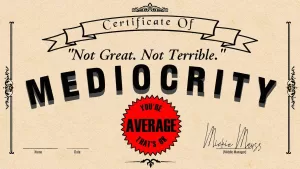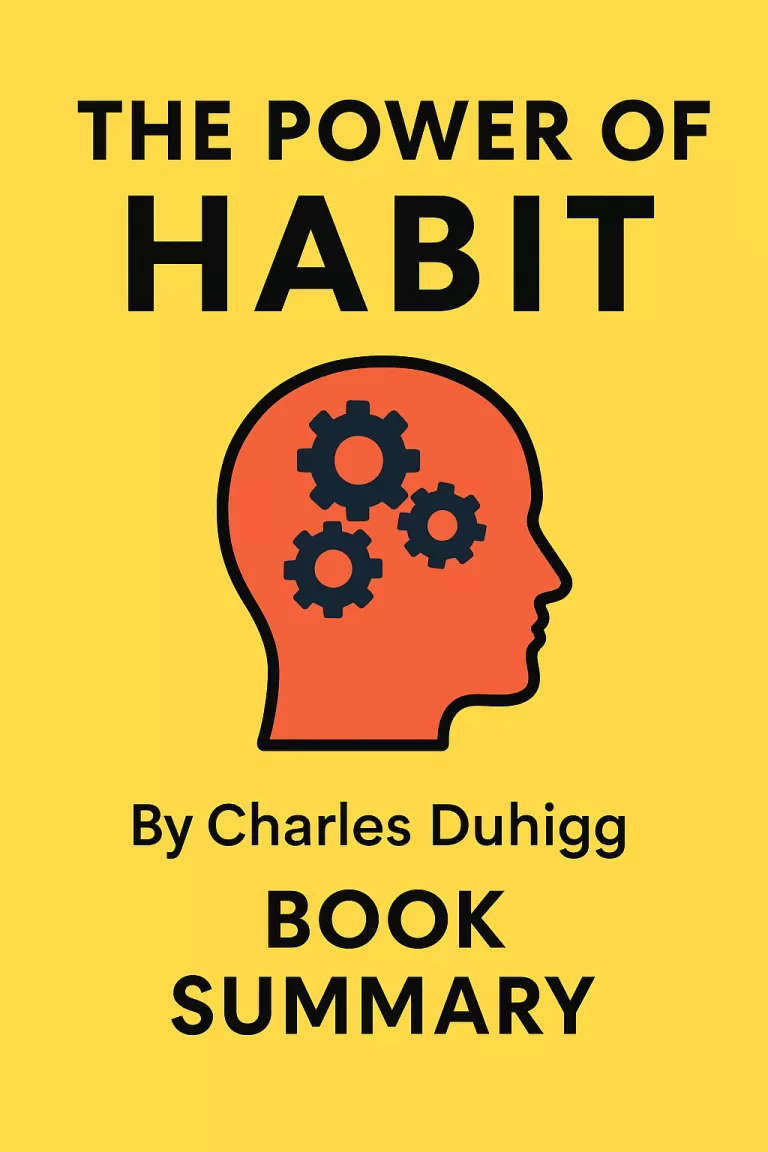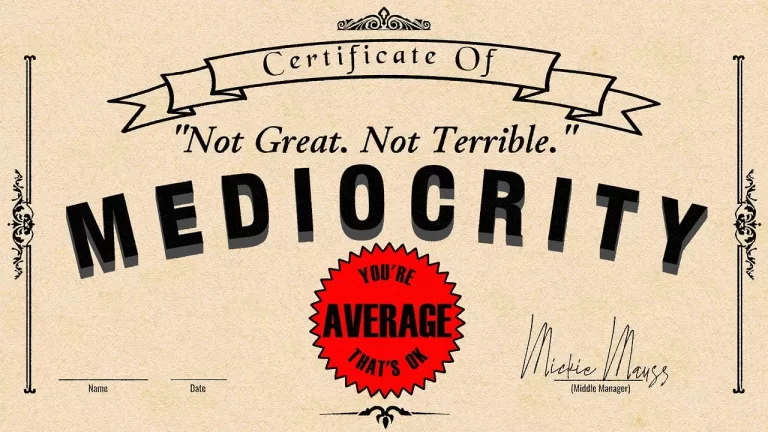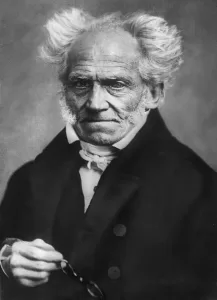Complete Book Summary by James Clear
Introduction: The Fundamentals of Tiny Changes
James Clear opens with a powerful premise that challenges conventional wisdom about change. Most people believe that massive success requires massive action, but Clear argues that small, consistent improvements compound into remarkable results over time. He introduces the concept of “atomic habits” – tiny changes that are the fundamental units of bigger transformations.
The book’s foundation rests on a mathematical truth that many overlook: if you can get just 1% better each day for one year, you’ll end up thirty-seven times better by the time you’re done. Conversely, if you get 1% worse each day for one year, you decline nearly down to zero. This isn’t just motivational speaking – it’s the compound effect applied to personal development.
Clear emphasizes that habits are the compound interest of self-improvement. Just as money multiplies through compound interest, the effects of your habits multiply as you repeat them over time. They seem to make little difference on any given day, yet the impact they deliver over months and years can be enormous.
Chapter 1: The Surprising Power of Atomic Habits
This chapter establishes why small habits make a significant difference by exploring three critical layers of behavior change that most people get wrong. Clear explains that there are three levels at which change can occur: outcome change, process change, and identity change.
Outcome change involves changing your results – losing weight, publishing a book, or winning a championship. Process change involves changing your habits and systems – implementing a new routine at the gym, decluttering your desk for better workflow, or developing a meditation practice. Identity change involves changing your beliefs – your worldview, your self-image, and your judgments about yourself and others.
The problem with most approaches to habit change is that they focus on the wrong layer. They concentrate on what you want to achieve rather than who you wish to become. Clear argues that the most effective way to change your habits is to focus not on what you want to achieve, but on who you wish to become.
Every action you take is a vote for the type of person you wish to become. No single instance will transform your beliefs, but as the votes build up, so does the evidence of your new identity. This is why meaningful change does not require radical change – small habits can make a meaningful difference by providing evidence of a new identity.
Chapter 2: How Your Habits Shape Your Identity (and Vice Versa)
Clear dives deeper into the relationship between habits and identity, explaining that your current habits are not necessarily the best way to solve the problems you face; they are just the methods you learned to use. Once your habits are established, they seem to stick around forever. This happens because habits create identity reinforcement loops.
The process works like this: every action is a vote for the type of person you wish to become. The more you repeat a behavior, the more you reinforce the identity associated with that behavior. Eventually, you begin to literally become your habits.
The goal is not to read a book, the goal is to become a reader. The goal is not to run a marathon, the goal is to become a runner. The goal is not to learn an instrument, the goal is to become a musician. Your behaviors shape your identity, and your identity shapes your behaviors. It’s a two-way street, and the traffic flows heavy in both directions.
Clear provides a practical framework for changing your identity through habits. First, decide who you want to be. Second, prove it to yourself with small wins. The most practical way to change who you are is to change what you do. Each time you write a page, you are a writer. Each time you practice the violin, you are a musician. Each time you start a workout, you are an athlete.
Chapter 3: How to Build Better Habits in 4 Simple Steps
This chapter introduces the habit loop, which consists of four stages: cue, craving, response, and reward. The cue triggers your brain to initiate a behavior. Cravings are the motivational force behind every habit – without some level of motivation or desire, we have no reason to act. The response is the actual habit you perform, which can take the form of a thought or an action. Finally, the reward is the end goal of every habit.
Clear explains that this four-step pattern is the backbone of every habit, and your brain runs through these steps in the same order each time. The cue triggers a craving, which motivates a response, which provides a reward, which satisfies the craving and, ultimately, becomes associated with the cue.
From this understanding, Clear derives the Four Laws of Behavior Change, which form the practical framework for the rest of the book. To build good habits: make it obvious (cue), make it attractive (craving), make it easy (response), and make it satisfying (reward). To break bad habits, you invert these laws: make it invisible, make it unattractive, make it difficult, and make it unsatisfying.
The 1st Law: Make It Obvious
Chapter 4: The Man Who Didn’t Look Right
Clear begins this section with a story about a psychologist who trained herself to notice details that others missed, demonstrating that awareness is the first step in changing any habit. Many of our daily habits are performed automatically, without conscious thought. Before we can effectively change our habits, we need to become aware of them.
He introduces the Habits Scorecard, a simple exercise where you write down all your current habits and categorize them as positive, negative, or neutral. This brings your unconscious habits into conscious awareness. The process of behavior change always starts with awareness. You need to be aware of your habits before you can change them.
Chapter 5: The Best Way to Start a New Habit
This chapter introduces implementation intentions, a strategy that pairs a new habit with a specific time and location. The formula is: “I will [BEHAVIOR] at [TIME] in [LOCATION].” This strategy leverages the power of being specific about when and where you will perform a new habit.
Clear also introduces habit stacking, which involves pairing a new habit with a current habit. The formula is: “After [CURRENT HABIT], I will [NEW HABIT].” This strategy uses the connectivity of behavior to your advantage. When one habit is firmly established, it can serve as the cue for the next habit.
The key is to tie your desired behavior into something you already do each day. Once you have mastered this basic structure, you can begin to create larger stacks by chaining small habits together.
Chapter 6: Motivation Is Overrated; Environment Often Matters More
Environment design is one of the most practical ways to shape behavior. Clear explains that every habit is context dependent, and small changes in context can lead to large changes in behavior over time. It’s easier to associate a new habit with a new context than to build a new habit in the face of competing cues.
The most powerful single word in the English language for building good habits is “redesign.” Redesign your life so the actions that matter most are also the actions that are easiest to do. Environment design allows you to take back control and become the architect of your life rather than the victim of your environment.
Clear provides practical strategies for designing your environment to support good habits: increase the cues for good habits and reduce the cues for bad habits. Make the cues of good habits obvious in your environment, and make the cues of bad habits invisible.
Chapter 7: The Secret to Self-Control
This chapter challenges the popular belief that people with great self-control are better at resisting temptation. Clear argues that disciplined people are better at structuring their lives in a way that does not require heroic willpower and self-control. They spend less time in tempting situations.
Rather than summoning a new dose of willpower whenever you want to do the right thing, it’s easier to avoid temptation altogether. You can break a bad habit, but you’re unlikely to forget it entirely. This means that simply resisting temptation is an ineffective strategy. Instead, you can eliminate bad habits by reducing exposure to the cue that causes them.
Self-control is a short-term strategy, not a long-term one. You may be able to resist temptation once or twice, but it’s unlikely you can muster the willpower to override your desires every time. Instead of summoning new reserves of willpower whenever you want to do the right thing, build an environment where doing the right thing is as easy as possible.
The 2nd Law: Make It Attractive
Chapter 8: How to Make a Habit Irresistible
Clear explains that the modern food industry has created a supernormal stimulus for our taste buds, and we need to create a supernormal stimulus for our habits. The more attractive an opportunity is, the more likely it is to become habit-forming. This is where temptation bundling comes into play.
Temptation bundling works by linking an action you want to do with an action you need to do. The formula is: “After [HABIT I NEED], I will [HABIT I WANT].” You’re more likely to find a behavior attractive if you get to do one of your favorite things at the same time.
Chapter 9: The Role of Family and Friends in Shaping Your Habits
Humans are social creatures, and we have a deep desire to bond with others and to fit in, to belong, and to win the respect of our peers. Clear explains that we imitate the habits of three groups in particular: the close (family and friends), the many (the tribe), and the powerful (those with status and prestige).
Join a culture where your desired behavior is the normal behavior. Nothing sustains motivation better than belonging to the tribe. It transforms a personal quest into a shared one. The culture we live in determines which behaviors are attractive to us. We tend to adopt habits that are praised and approved of by our culture because we have a strong desire to fit in and belong to the tribe.
Chapter 10: How to Find and Fix the Root Causes of Your Bad Habits
Every behavior has a surface level craving and a deeper underlying motive. Clear explains that habits are modern-day solutions to ancient desires. Your habits are just modern-day solutions to ancient desires, and new versions of old vices. The underlying motives behind human behavior remain the same across time and culture.
Your current habits are not necessarily the best way to solve the problems you face; they are just the methods you learned to use. Once you associate a solution with the problem you need to solve, you keep coming back to it. You can make hard habits more attractive if you can learn to associate them with a positive experience.
The 3rd Law: Make It Easy
Chapter 11: Walk Slowly, but Never Backward
Clear introduces the difference between being in motion and taking action. Motion makes you feel like you’re getting things done, but really, you’re just preparing to get something done. Action, on the other hand, is the type of behavior that will deliver an outcome.
The most effective form of learning is practice, not planning. Focus on taking action, not being in motion. Preparation becomes a form of procrastination when you find yourself planning more than you practice. If you want to master a habit, the key is to start with repetition, not perfection.
Chapter 12: The Law of Least Effort
Human behavior follows the Law of Least Effort. We will naturally gravitate toward the option that requires the least amount of work. Look at any behavior that fills up much of your life and you’ll see that it can be performed with very low levels of motivation.
The idea is to make your good habits as easy as possible to do. Reduce the friction associated with good behaviors. When friction is low, habits are easy. Increase the friction associated with bad behaviors. When friction is high, habits are difficult.
Clear provides practical strategies for reducing friction: prepare your environment to make future actions easier, master the decisive moment that delivers disproportionate impact, and use the Two-Minute Rule to scale down your habits until they can be done in two minutes or less.
Chapter 13: How to Stop Procrastinating by Using the Two-Minute Rule
The Two-Minute Rule states: “When you start a new habit, it should take less than two minutes to do.” The idea is to make your habits as easy as possible to start. Anyone can meditate for one minute, read one page, or put one item of clothing away.
A new habit should not feel like a challenge. The actions that follow can be challenging, but the first two minutes should be easy. What you want is a gateway habit that naturally leads you down a more productive path. Instead of trying to engineer a perfect habit from the start, do the easy thing on a more consistent basis.
Chapter 14: How to Make Good Habits Inevitable and Bad Habits Impossible
Clear introduces commitment devices – choices you make in the present that control your actions in the future. It’s a way to lock in future behavior, bind you to good habits, and restrict you from bad ones. The key is to change the task such that it requires more work to get out of the good habit than to get started on it.
Technology can transform actions that were once hard, annoying, and complicated into behaviors that are easy, painless, and simple. Using technology to automate your habits is the most reliable and effective way to guarantee the right behavior.
The 4th Law: Make It Satisfying
Chapter 15: The Cardinal Rule of Behavior Change
The Cardinal Rule of Behavior Change: What is rewarded is repeated. What is punished is avoided. You learn what to do in the future based on what you were rewarded for doing in the past. Positive emotions cultivate habits. Negative emotions destroy them.
The first three laws of behavior change increase the odds that a behavior will be performed this time. The fourth law increases the odds that a behavior will be repeated next time. It completes the habit loop by addressing the reward.
We are looking for immediate satisfaction, and because of how we are wired, immediate rewards are valued much more highly than future rewards. The road less traveled is the road of delayed gratification. If you’re willing to wait for the rewards, you’ll face less competition and often get a bigger payoff.
Chapter 16: How to Stick with Good Habits Every Day
Clear introduces habit tracking as one of the most effective ways to motivate yourself to stick with a habit. Habit tracking provides immediate satisfaction and makes a habit satisfying in the moment. It also provides visual proof that you are casting votes for the type of person you want to become.
Don’t break the chain. Try to keep your habit streak alive. Never miss twice. If you miss one day, try to get back on track as quickly as possible. The first mistake is never the one that ruins you. It is the spiral of repeated mistakes that follows. Missing once is an accident. Missing twice is the start of a new habit.
Chapter 17: How an Accountability Partner Can Change Everything
We care deeply about what others think of us, and this tendency can be a powerful motivator. Clear explains that knowing that someone else is watching can be a powerful motivator. You are less likely to procrastinate or give up because there is an immediate cost.
An accountability partner can create an immediate cost to inaction. We care deeply about what others think of us, and we do not want others to have a lesser opinion of us. You can even automate this process through habit contracts that impose penalties for failing to stick to your commitments.
Advanced Tactics: How to Go from Being Merely Good to Being Truly Great
Chapter 18: The Truth About Talent (When Genes Matter and When They Don’t)
Clear discusses the role of genetics in habit formation and performance. Genes do not determine your destiny. They determine your areas of opportunity. They reveal what you should work hard on and where you should place your bets.
The key is to direct your effort toward areas that both excite you and match your natural skills, to align your ambition with your ability. You don’t have to build the habits everyone tells you to build. Choose the habit that best suits you, not the one that is most popular.
Chapter 19: The Goldilocks Rule: How to Stay Motivated in Life and Work
The Goldilocks Rule states that humans experience peak motivation when working on tasks that are right on the edge of their current abilities. Not too hard. Not too easy. Just right. Working on challenges of just manageable difficulty is crucial for maintaining motivation.
The greatest threat to success is not failure but boredom. We get bored with habits because they stop delighting us. The outcome becomes expected. And as our habits become ordinary, we start derailing our progress to seek novelty.
Chapter 20: The Downside of Creating Good Habits
Clear acknowledges that habits can be a double-edged sword. They can lock us into previous patterns of thinking and acting, even when the world is shifting around us. Everything is impermanent. Life is constantly changing, so you need to periodically check in to see if your old habits and beliefs are still serving you.
The upside of habits is that we can do things without thinking. The downside of habits is that you get used to doing things a certain way and stop paying attention to little errors. When you can do something “good enough” on autopilot, you stop thinking about how to do it better.
Mastery is the process of narrowing your focus to a tiny element of success, repeating it until you have internalized the skill, and then using this new habit as the foundation to advance to the next frontier of your development. Each habit unlocks the next level of performance.
Conclusion: The Secret to Results That Last
Clear concludes by emphasizing that the secret to getting results that last is to never stop making improvements. It’s remarkable what you can build when you just don’t stop. Small habits don’t add up. They compound. That’s the power of atomic habits. Tiny changes. Remarkable results.
Success is not a goal to reach or a finish line to cross. It is a system to improve, an endless process to refine. The purpose of setting goals is to win the game. The purpose of building systems is to continue playing the game. True long-term thinking is goal-less thinking. It’s not about any single accomplishment. It is about the cycle of endless refinement and continuous improvement.
In the end, atomic habits are not just about getting better results – though that certainly happens. They are about becoming the type of person you want to be. In the beginning, you are pushed by a goal. In the end, you are pulled by an identity. The ultimate form of intrinsic motivation is when a habit becomes part of your identity.








